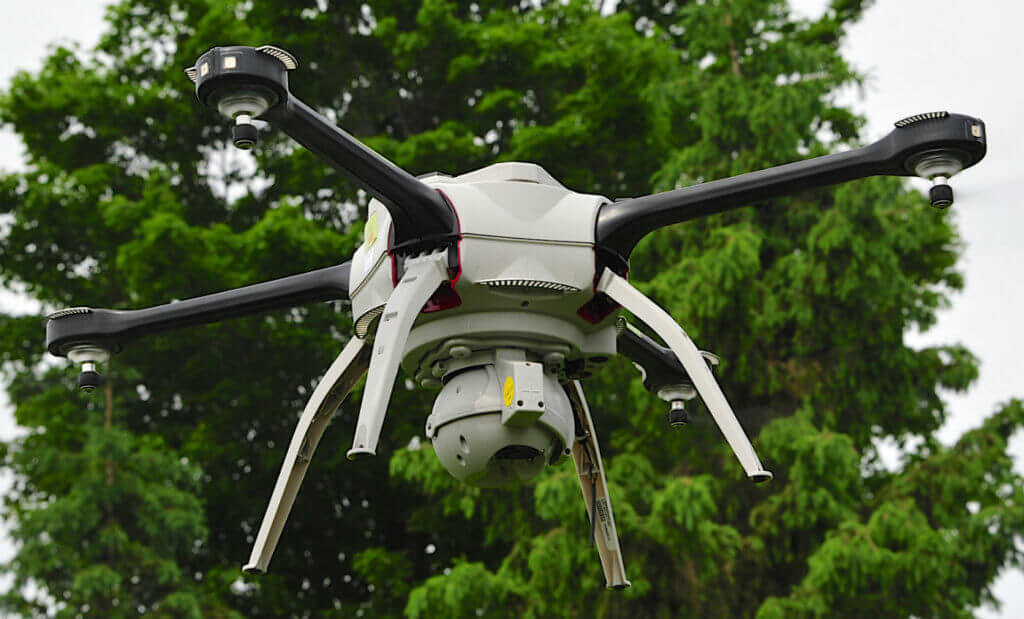Persistent incursions by unmanned air vehicles (UAVs) into controlled or restricted airspace have prompted the Canadian government to announce new regulations which will take effect June 1.

A Transport Canada spokesperson explained to Vertical that the delay in putting the new regime into effect is designed to give UAV operators time to not only familiarize themselves with the new rules, but also to take an online exam to get a “drone pilot certificate” and register their UAV.
Failure to comply will leave individuals liable for fines under the Criminal Code of up to $3,000, while corporate offenders face penalties up to $25,000. Disruption of airport activities could result in incarceration. “When you take control of an aircraft you accept the responsibilities of a pilot,” Transport Minister Marc Garneau said Jan. 9 when he unveiled the plan. “You are a pilot when you fly a drone.”
The regulations apply to all UAVs flown for recreational, commercial or research purposes and which have a gross weight of 0.25 to 35 kilograms (0.66 to 77.2 pounds). Lighter models will be exempt but operators of heavier ones, governed by Sections 602.41 and 603.66 of the Canadian Aviation Regulations, will continue to require a Special Flight Operations Certificate (SFOC) and what the spokesperson described as “a flight review.”
Until then, all are required to comply with an “interim order respecting the use of model aircraft” issued by Transport last May. That order was an attempt to deal with UAVs presenting “a significant risk, direct or indirect, to aviation safety or the safety of the public.” More than 400 UAV sightings by commercial, private and military pilots and the public, cited in the department’s Civil Aviation Daily Occurrence Reporting System (CADORS), have occurred in the last five years, including more than 130 in 2018.
The interim order required them to be flown at least 5.6 kilometers (three nautical miles) away from “any area where aircraft take off or land” and at least 1.9 km (1 nm) away from heliports, and nowhere in any airport control zone. Those separations have been confirmed in the new package.
Requiring visual line of sight (VLOS) contact at all times, it also limited operations to 90 meters (300 feet) above ground level (AGL), but that will be increased to 122 m (400 ft) when the new rules take effect. That change evidently was made after “significant consultations” last year. Nor can any UAVs be flown over police or other first responder activities.
“The government is resolved to improve the security of aviation and of the public,” Garneau told reporters at a Montreal news conference. “At the same time, we are also resolved to encourage and support the possibilities of innovation and economic growth that drones represent.”
Drafted by Transport in cooperation with Justice department lawyers, the new rules were approved by the federal cabinet just before Christmas, almost coincident with UAV sightings near London Gatwick Airport which resulted in a total facility shutdown just before the peak holiday travel period.
Gatwick administration said Jan. 3 that it had invested several million pounds in response capability within days of the sightings.
A Jan. 8 sighting at London Heathrow closed down operations there for about an hour, again without incident, and it is now the focus of what police described as a “full criminal investigation.” Commander Stuart Cundy of the Metropolitan Police pointed out in a statement that it is an offence under the Aviation Security Act to endanger the safety of an aircraft and that “anyone found guilty of this offence could face a life sentence.”
In Canada, despite the relatively steady rate of UAV sightings in recent years, there have been no fatal collisions. That scenario is a prospect which Garneau – a former Royal Canadian Navy officer who flew jets as part of his training to become Canada’s first astronaut in 1984 – acknowledged in June 2017 is “the kind of nightmare scenario that keeps me up at night.”
Just five months later, a Beechcraft King Air A100 with two pilots and six passengers flying under instrument flight rules to Quebec City from Rouyn-Noranda in northern Quebec was on final approach at 2,500 feet when the crew spotted a UAV “about the size of a dinner plate” in front of the twin turboprop’s left wing.
“The pilot had no time to take evasive action,” the Transportation Safety Board of Canada said in its report. “The impact was unavoidable, and the drone disintegrated … The crew declared an emergency, then completed the landing without further incident. There were no injuries.” And, given the lack of UAV debris, no way for police to follow up.
That also was the case with the only other mid-air incident in the CADORS database over the past five years believed to be caused by a UAV. In February 2018, the pilot of a Cessna 172S on a training flight in British Columbia reported that the leading edge of his left wing had been struck by an unknown object. He landed without further incident and police were advised. Blue paint was evident on the Cessna’s damaged area.
When he was asked where recreational UAVs could be legally flown, Garneau encouraged owners to contact the Model Aeronautics Association of Canada, which has branches in most major centres. Otherwise, he advised, “find an area that is more remote” because “we’ve had too many incidents of drones landing near people, landing on cars, and they pose a hazard.”









